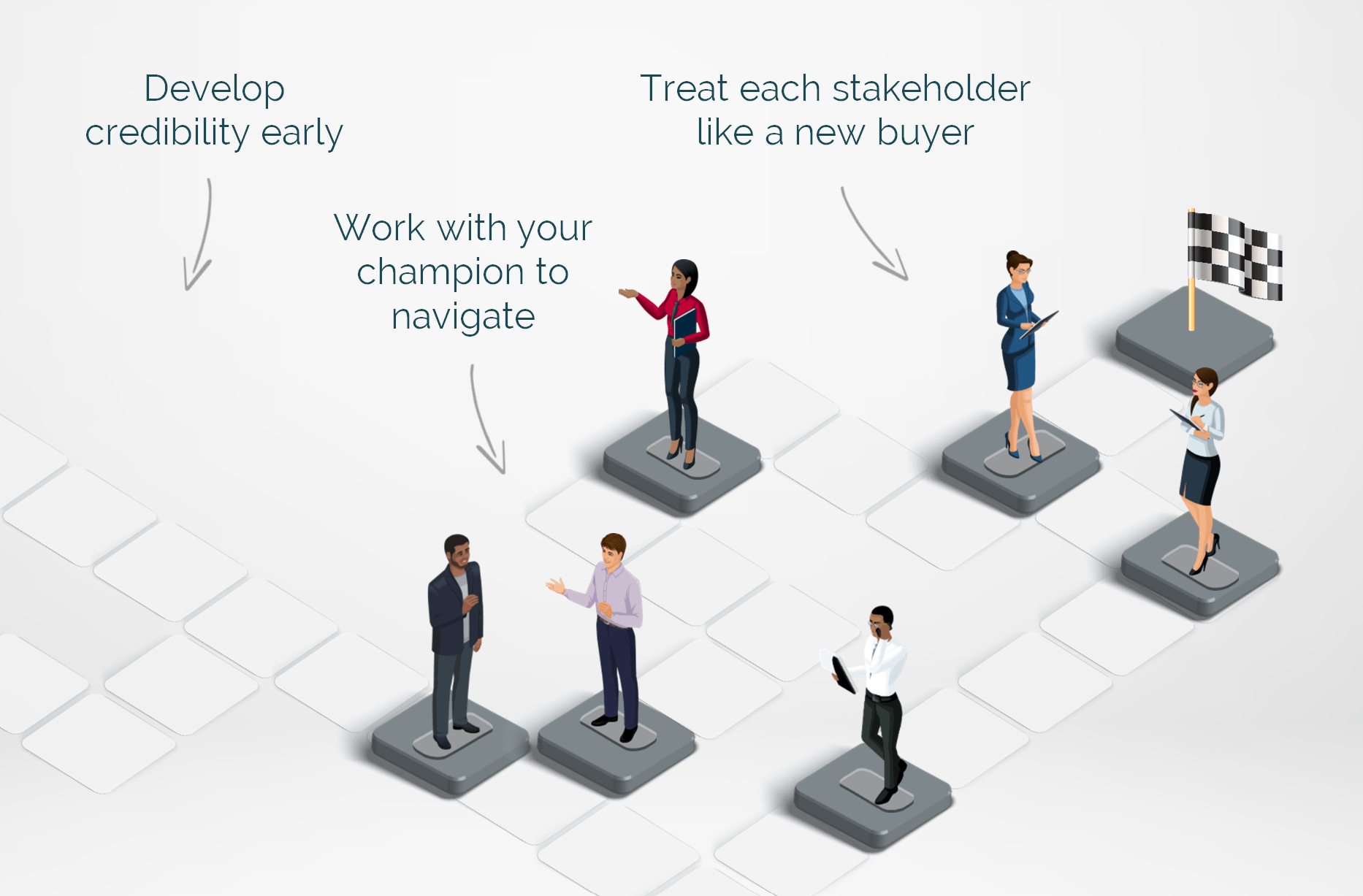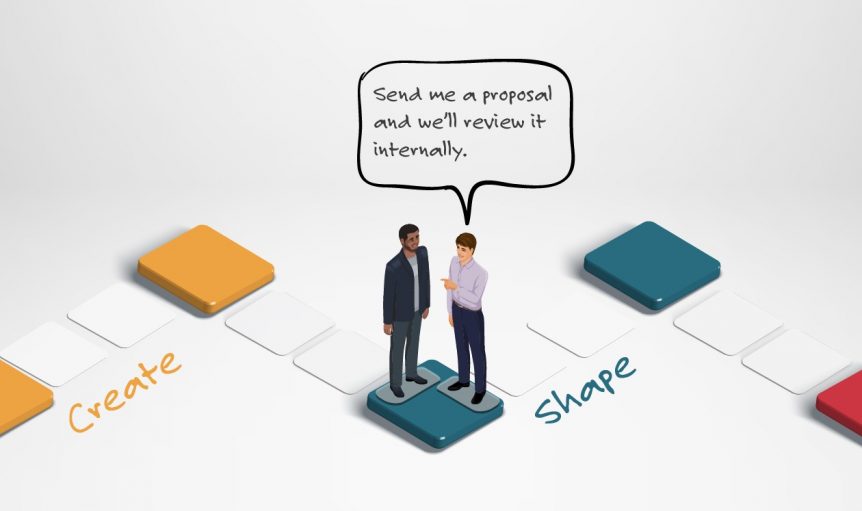This is the third in a four-part series about how conversational sales can help you and your sales teams maximize sales performance.
You’ve probably heard the theory: the youngest and oldest kids in the family get all the attention, while middle children get less attention. If you’re of a certain age, you probably saw it every week on The Brady Bunch (Marcia, Marcia, Marcia!). Scientists are still trying to figure out whether the middle-child syndrome is really a thing, but in enterprise sales cycles, there’s no doubt that it’s true.
Creating opportunities is harder than ever in today’s enterprise selling environment, so it’s not surprising that salespeople get pretty excited when they uncover good ones—and jump straight to late-stage selling. Instead of nurturing the opportunity to maximize its value, they often try to close it so quickly that they ignore critical steps in the process. But there’s plenty of research showing that when the work between identifying an opportunity and trying to close it is ignored or the seller relies on the buyer to drive the process, enterprise selling efforts often fail. These too-quick-to-close deals are usually the ones where the closed-lost reason is no decision, because the salesperson knows that something bad happened–but has no clue what it is. We find that traditional sales methodologies skip right over this step, leaving a gaping hole that can become a revenue sieve if left unattended.
Why do deals die in the middle stage?
So why do deals die in the middle stage of B2B enterprise selling processes? For one thing, multiple stakeholders are involved in virtually every opportunity, and they all affect the process. For example, each stakeholder has the potential to kill a deal, but may not have the power to advance or approve it. Maybe someone doesn’t prioritize the problem your solution aims to fix, perhaps they have a different perspective or way to approach to challenge, or they may even see what you’re selling as an existential threat. Whatever the reason, it is critical that salespeople approach these stakeholders strategically to drive alignment across the buyer’s organization.
How do you improve sales performance in middle stage?
Despite our best efforts, we’ve all experienced the dreaded “closed-lost: no decision.” But how can you diminish the risk that it will happen in the future? Here are three surefire tips:
- Develop credibility early in the sales cycle. If you’ve developed credibility using proper early-stage selling techniques, the buyer is more likely to see you as a trusted advisor and as a result, will be receptive to working with you to navigate the company’s buying journey. It’s critical to use customer examples of how you have helped drive alignment with other companies, earning your place at the table as a partner during the buying process. If you do it right, your buyer will become an internal champion and you’ll become an integral part of the team. Your success depends on that level of trust, so don’t take this step lightly!
- Work with your internal champion to navigate the roadmap. Every once in a while, you run into a buyer who is both motivated and gifted enough to drive your deal though the approval process on their own. It’s more likely, however, that your buyer is inexperienced and without a roadmap to help navigate the buying process. Unlike your buyer, however, your salespeople have past experience working similar deals, so it’s critical to use this experience to outline a conversation roadmap. You should draw upon different sales strategies to engage key stakeholders and gather input on a potential solution. Without this insight, sellers have no way to drive alignment in the buying process. But as I mentioned in the first tip, the buyer is not likely to connect you for those conversations unless you establish credibility up front.
- Treat each stakeholder like a brand-new buyer. Even if your internal champion has teed up a warm opening for you, each additional stakeholder you’ll face in an enterprise selling process has a different perspective. Maybe they’re part of the process as a courtesy, or perhaps they have a vested interest. Maybe they see your solution in a positive light, but they could also see it as a threat. Finally, different stakeholders have different needs. For example, a VP of Sales might see your solution in a vastly different way than the VP of Finance or HR, so you can’t approach each of those people the same way.Once you understand each stakeholder’s role in the process, you should treat each interaction like you’re working with a new buyer: do your research up front and use a conversational sales approach that is customized for each stakeholder. This enables you to understand the unique criteria that each may have for your solution. As a result, you can tailor it to address everyone’s unique needs and those of the organization as a whole. We call this approach co-creation, and it’s something every customer wants (even if they don’t know it). The reason this works so well is that it’s much harder for your buyer to say “no” later in the sales process if you worked together to build their custom solution to begin with.

Middle-stage selling is critical if you want to differentiate your organization, yet most salespeople do not consider it because it’s absent from most sales training methodologies. Even if salespeople are aware of it, they typically prefer not to take the time and energy necessary to engage the right stakeholders because it could slow down their sales processes. But they fail to realize that this short-sighted approach will force them to spend significantly more time later trying to drive alignment.
Look in your CRM today and think about your stalled opportunities: Did you do what you needed to in the middle stage to help your customer buy your solution?

